
Hackaday Podcast
Hackaday
1 Listener
All episodes
Best episodes
Seasons
Top 10 Hackaday Podcast Episodes
Goodpods has curated a list of the 10 best Hackaday Podcast episodes, ranked by the number of listens and likes each episode have garnered from our listeners. If you are listening to Hackaday Podcast for the first time, there's no better place to start than with one of these standout episodes. If you are a fan of the show, vote for your favorite Hackaday Podcast episode by adding your comments to the episode page.
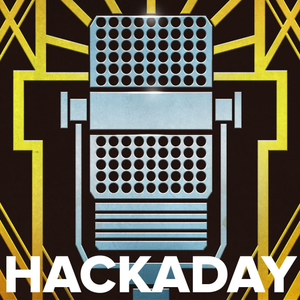
Ep 217: The Unintentional Space and 3D Printing Episode
Hackaday Podcast
05/05/23 • 76 min
Hackaday Editors Elliot Williams and Tom Nardi definitely didn't plan on devoting most of this episode to 3D printing and space stories, but let's be honest, it was bound to happen sooner or later. After an update on the Hackaday Prize, the discussion moves on to a pair of troubled spacecraft and the challenges of exploring the final frontier.
From there you'll hear about a chocolate 3D printer we've had our eyes on for years, the tools you should have next to your own (non-chocolate) 3D printer, and a bit of contemplation of what it really means to design for 3D printing versus traditional manufacturing methods. But it's not all plastic fantastic -- by the end of the episode you'll also hear about some particularly bold high-altitude aviators and the surprisingly short time we have left with the humble barcode.
1 Listener
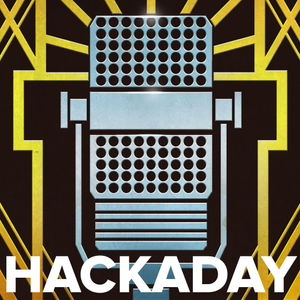
Ep 212: Staring through ICs, Reading Bloom Filters, and Repairing, Reworking, and Reballing
Hackaday Podcast
03/31/23 • 60 min
It was quite the cornucopia of goodness this week as Elliot and Dan sat down to hash over the week in hardware hacking. We started with the exciting news that the Hackaday Prize is back -- already? -- for the tenth year running! The first round, Re-Engineering Education, is underway now, and we're already seeing some cool entries come in. The Prize was announced at Hackday Berlin, about which Elliot waxed a bit too. Speaking of wax, if you're looking to waterproof your circuits, that's just one of many coatings you might try. If you're diagnosing a problem with a chip, a cheap camera can give your microscope IR vision. Then again, you might just use your Mark I peepers to decode a ROM. Is your FDM filament on the wrong spool? We've got an all-mechanical solution for that. We'll talk about tools of the camera operator's trade, the right to repair in Europe, Korean-style toasty toes, BGA basics, and learn just what the heck a Bloom filter is.
Head on over to the show notes for links and more!
1 Listener
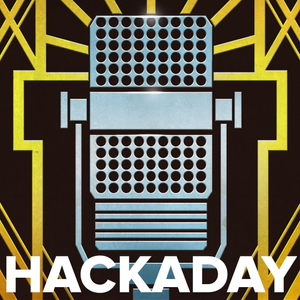
04/05/24 • 42 min
This week, Editor-in-Chief Elliot Williams and Kristina Panos convened once again to give the lowdown on this week's best hacks. First up in the news -- it's giga-sunset time for Gigaset IoT devices, which simultaneously became paperweights on March 29th. And all that Flipper Zero panic? It has spread to Australia, but still remains exactly that: panic.
Then it's on to What's That Sound. Kristina failed again, although she was in the right neighborhood. Can you get it? Can you figure it out? Can you guess what's making that sound? If you can, and your number comes up, you get a special Hackaday Podcast t-shirt.
Then it's on to the hacks, beginning with the terrifying news of an xz backdoor. From there, we marvel at a 1980s 'butler in a box' -- a voice-activated home automation system -- and at the idea of LoRa transmissions without a radio. Finally, we discuss why you don't want to piss off Trekkies, and whether AI has any place in tech support.
Check out the links on Hackaday to follow along, and as always, tell us what you think about this episode in the comments!
1 Listener
1 Comment
1
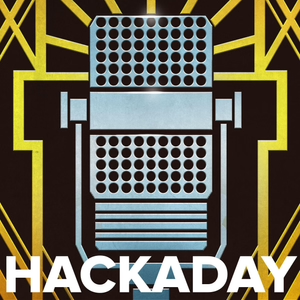
Ep 221: The Future of the Raspberry Pi, Sniffing a Toothbrush, Your Tactical Tool Threshold
Hackaday Podcast
06/02/23 • 62 min
ditors Elliot Williams and Tom Nardi are back in the (virtual) podcast studio to talk the latest phase of the 2023 Hackaday Prize, the past, present, and future of single-board computers, and a modern reincarnation of the Blackberry designed by hardware hackers. They'll also cover the current state of toothbrush NFC hacking, the possibilities of electric farm equipment, and a privately funded satellite designed to sniff out methane. Stick around till the end to find out if there really is such a thing as having too many tools.
Check out the links and tell us what you think about this episode in the comments!
1 Listener
1 Comment
1
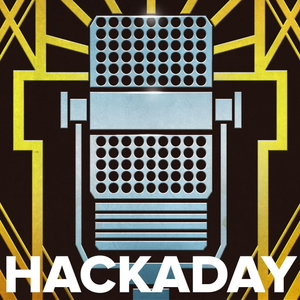
01/19/24 • 84 min
This week Hackaday Editors Elliot Williams and Tom Nardi start things off with a traffic report from the Moon, which has suddenly become a popular destination for wayward robots.
[caption id="attachment_657278" align="alignright" width="300"] Anonymizing an ATtiny85 via laser[/caption]
From there, they'll go over a fire-tending contraption that's equal parts madness and brilliance, two decades of routers being liberated by OpenWRT, impressive feats of chip decapping, and USB-C's glorious rise to power.
You'll also hear about the latest developments in laptop RAM, exploits against the flash encryption used on the ESP32, and Android powered oscilloscopes. The duo will wrap things up with horror stories from the self-checkout aisle, and a look at the fantastical rolling power station that Dan Maloney has been building in his driveway.
Check out the links over at Hackaday, and as always, tell us what you think about this episode in the comments!
1 Listener
1 Comment
1
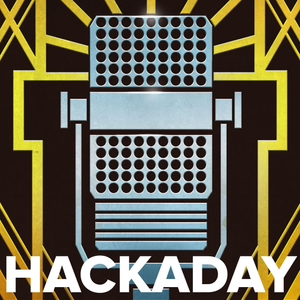
Ep 260: KiCad 8, Two Weather Stations, and Multiple I2Cs
Hackaday Podcast
03/01/24 • 67 min
It's a leap year, so Elliot and Dan put the extra day to good use tracking down all the hottest hacks from the past week and dorking out about them. There's big news in the KiCad community, and we talked about all the new features along with some old woes. Great minds think alike, apparently, since two different e-ink weather stations made the cut this week, as did a floating oscilloscope, an automated film-developing tank, and some DIY solar panels. We talked about a hacker who figured out that water makes a pretty good solar storage medium, and it's cheaper than lithium, another who knows that a crappy lathe is better than no lathe, and what every hacker should know about Ethernet. Is there a future for room-temperature superconductors? Maybe it just depends on how cold the room is.
1 Listener

Ep 261: Rickroll Toothbrush, Keyboard Cat, Zombie Dialup
Hackaday Podcast
03/08/24 • 36 min
This week, Editor-in-Chief Elliot Williams and Kristina Panos met up in a new disposable location to give the lowdown on this week's best hacks. First up in the news -- the Home Sweet Home Automation contest is still going strong. You've still got plenty of time, so get on over to Hackaday.IO and start your entry today. In the news, the UK is asking how powerful an electric bike should be (more than 250 Watts, certainly), and legal pressure from Nintendo has shut down two emulators.
Then it's on to What's That Sound. Kristina failed again, although she was pretty confident about her answer. Can you get it? Can you figure it out? Can you guess what's making that sound this week? If you can, and your number comes up, you get a special Hackaday Podcast t-shirt.
But then it's on to the hacks, beginning with a Wi-Fi toothbrush hack from [Aaron Christophel]. This can only mean the beginning of some epic toothbrush firmware, right? From there, we marvel at moving cat food, the ultimate bulk material, and the idea of spoofing a whole cloud of drones. Finally, we examine one of Jenny's Daily Drivers in the form of Damn Small Linux (the other DSL), and reminisce about dial-up (speaking of DSL).
Check out the links below if you want to follow along, and as always, tell us what you think about this episode in the comments!
1 Listener
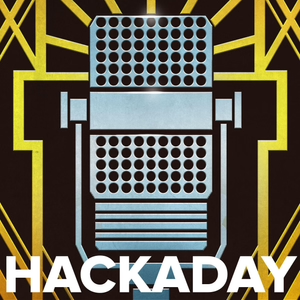
Ep 258: So Much Unix, Flipper Flip-out, and the Bus Pirate 5
Hackaday Podcast
02/16/24 • 71 min
Hackaday Editors Elliot Williams and Tom Nardi discuss all the week's best and most interesting hacks and stories, starting with Canada's misguided ban on the Flipper Zero for being too spooky. From there they'll look at the state-of-the-art in the sub-$100 3D printer category, Apple's latest "Right to Repair" loophole, running UNIX on the NES (and how it's different from Japan's Famicom), and the latency of various wireless protocols.
After singing the praises of the new Bus Pirate 5, discussion moves on to embedded Linux on spacecraft, artfully lifting IC pins, and the saga of the blue LED. Finally you'll hear the how and why behind electrical steel, and marvel at a Mach 10 missile that (luckily) never needed to be used.
1 Listener
1 Comment
1
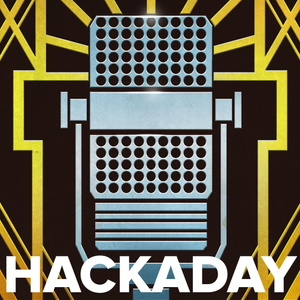
Ep 259: Twin-T, Three D, and Driving to a T
Hackaday Podcast
02/23/24 • 59 min
Hackaday Editors Elliot Williams and Al Williams sat down to compare notes on their favorite Hackaday posts of the week. You can listen in on this week's podcast. The guys talked about the latest Hackaday contest and plans for Hackaday Europe. Plus, there's a what's that sound to try. Your guess can't be worse than Al's, so take a shot. You could win a limited-edition T-shirt.
In technical articles, Elliot spent the week reading about brushless motor design, twin-t oscillators, and a truly wondrous hack to reverse map a Nintendo Switch PCB. Al was more nostalgic, looking at the 555 and an old Radio Shack kit renewed. He also talked about a method to use SQL to retrieve information from Web APIs.
Quick hacks were a decided mix with everything from homemade potentiometers to waterproof 3D printing. Finally, the guys talked about Hackaday originals. Why don't we teach teens to drive with simulators? And why would you want to run CP/M -- the decades-old operating system -- under Linux?
1 Listener
1 Comment
1
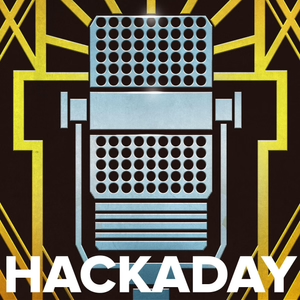
04/21/23 • 58 min
It's podcast time again, and this time around Elliot and Dan took a grand tour through the week's best and brightest hacks. We checked out an old-school analog cell phone that went digital with style, dug into a washing machine's API, and figured out how to melt metal in the microwave -- the right way. Does coffee taste better when it's made by a robot? Of course it does! Can you get a chatbot to spill its guts? You can, if you know how to sweet talk it. Let's play Asteroids on an analog oscilloscope, spoof facial recognition with knitting, and feel the need for speed with an AI-controlled model race car. And was VCF East worth the wait? According to Tom Nardi, that's a resounding "Yes!"
Check out the links over on Hackaday and tell us what you think about this episode in the comments!
1 Listener
1 Comment
1
Show more best episodes

Show more best episodes
FAQ
How many episodes does Hackaday Podcast have?
Hackaday Podcast currently has 322 episodes available.
What topics does Hackaday Podcast cover?
The podcast is about Electronics, How To, Podcasts, Technology and Education.
What is the most popular episode on Hackaday Podcast?
The episode title 'Ep 238: Vibrating Bowl Feeders, Open Sourcery, Learning to Love Layer Lines' is the most popular.
What is the average episode length on Hackaday Podcast?
The average episode length on Hackaday Podcast is 55 minutes.
How often are episodes of Hackaday Podcast released?
Episodes of Hackaday Podcast are typically released every 7 days.
When was the first episode of Hackaday Podcast?
The first episode of Hackaday Podcast was released on Dec 18, 2018.
Show more FAQ

Show more FAQ